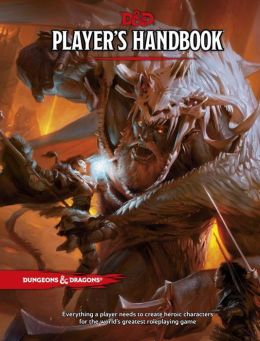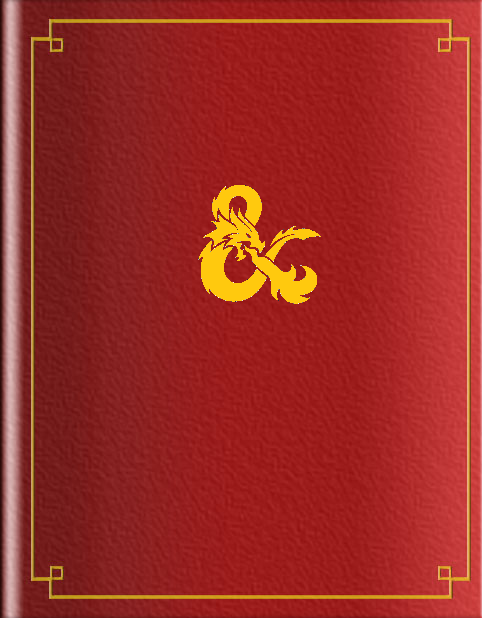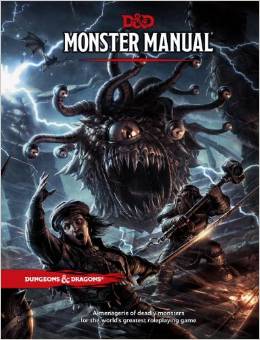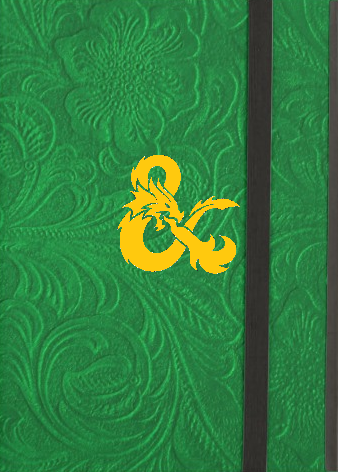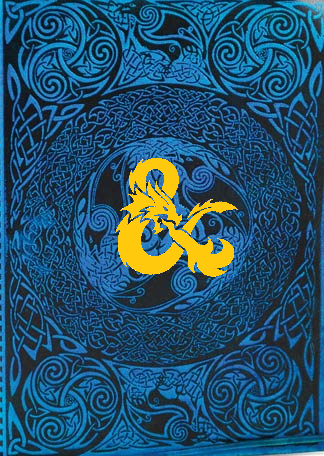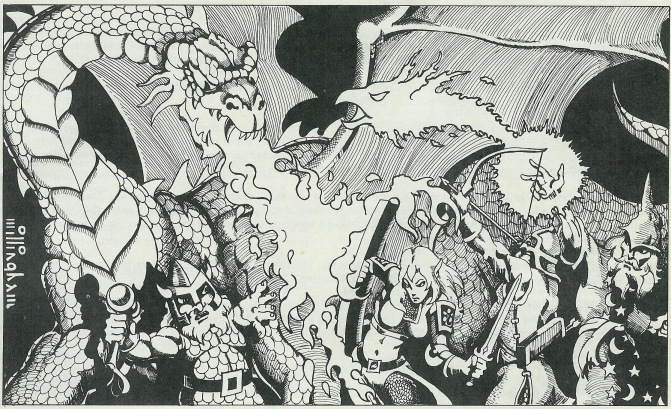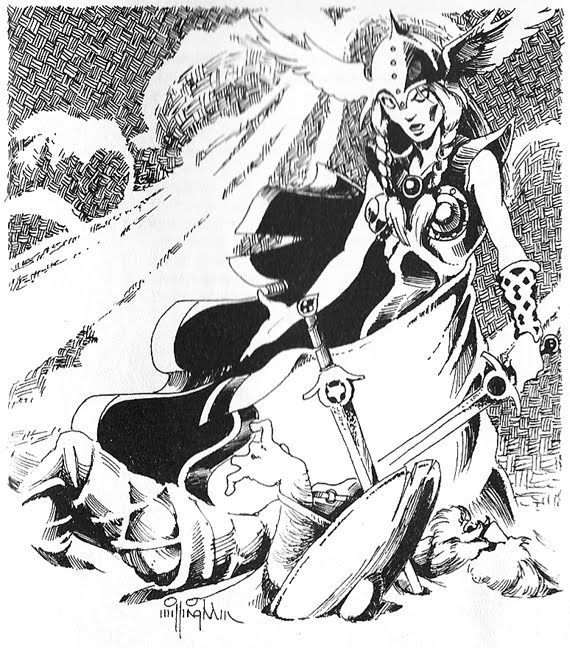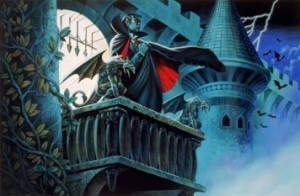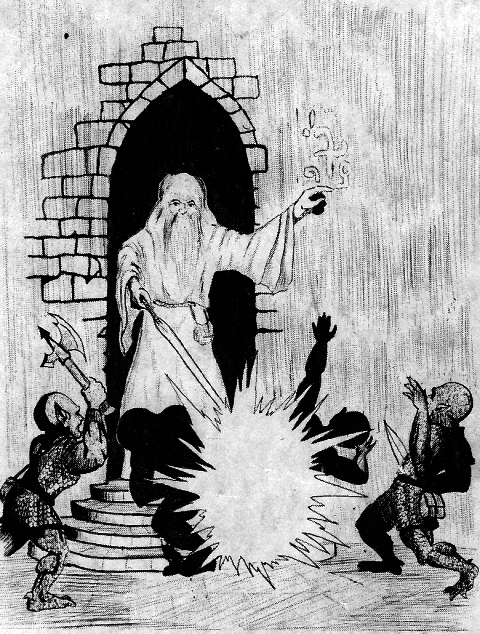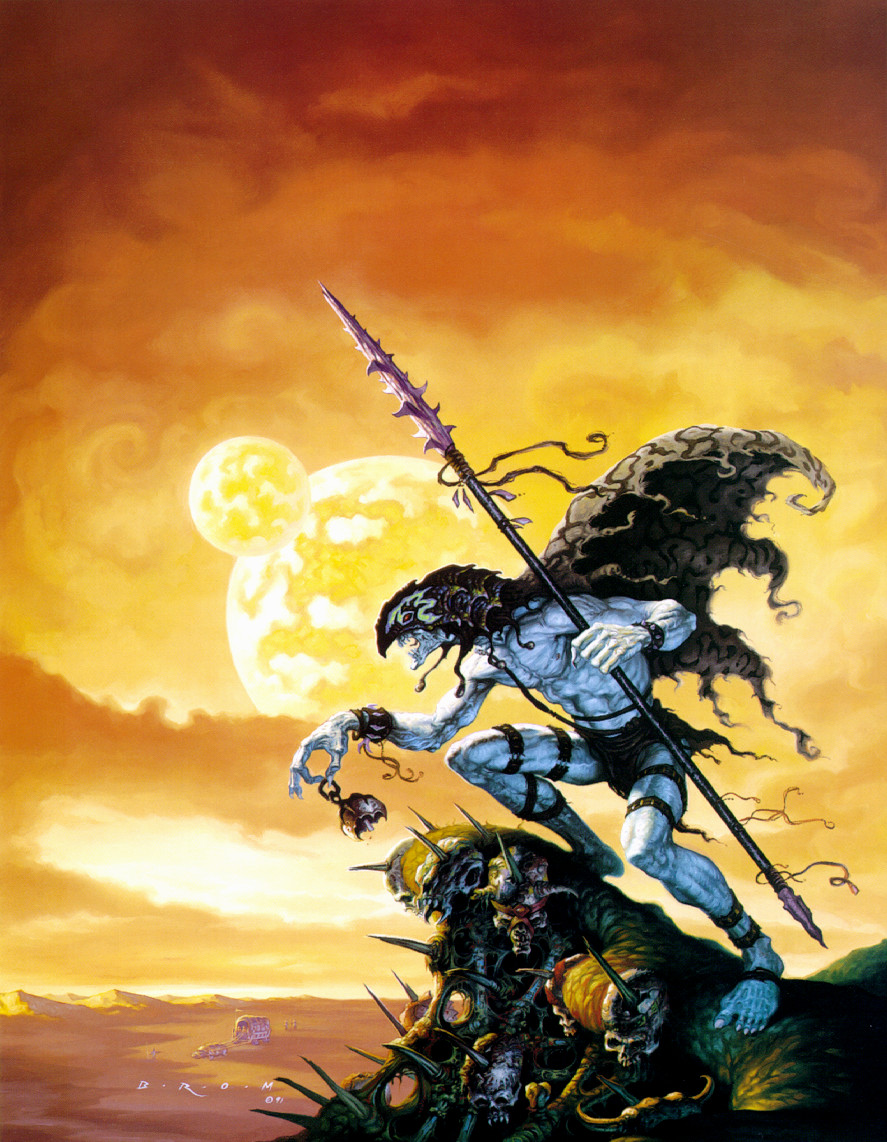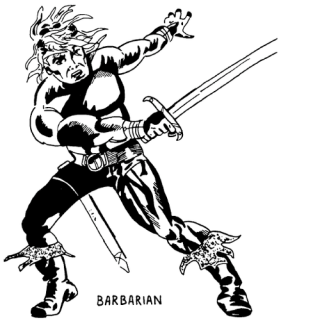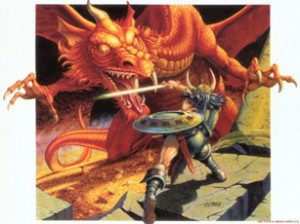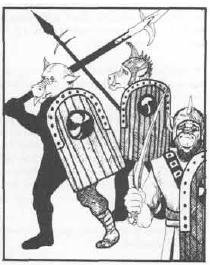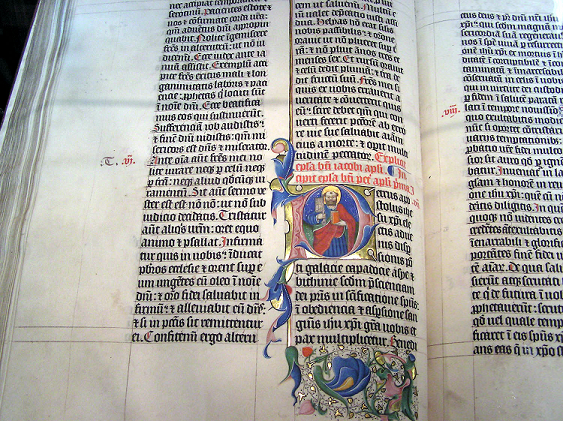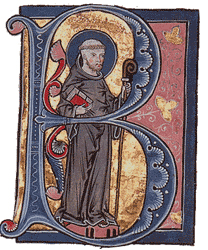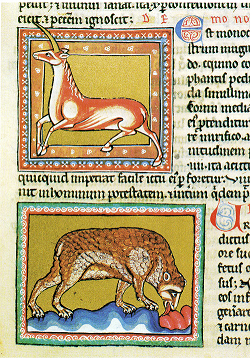User:Kydo/Reviews
Book Reviews[edit]
These are my reviews of the three corebooks for d&d 5e. I am assessing them, not just on their own abstract merit, but as an investment. At 60$ a book, this is the most expensive d&d ever. So, do you get your money's worth? My assessment is no. In a world where you can download classical masterpieces for 5 bucks a pop, content has little to no value in a book. It comes down to craftsmanship. Sadly, the craftsmanship behind these books is in the 25-35$ range, and they're charging DOUBLE that. The argument is that the content, enabling you to play 5e D&D, is worth the price... but in a world where piracy is as simple as the google search bar, and there are contests to design a whole RPG system in under 24 hours, it really isn't. There's nothing important or special about the 5th edition system which should set it apart from any other content- it's far from the 5$ masterpieces available for my iphone! People have argued that this is on-par with a new release videogame, which is true, but the return doesn't add up. Even a crap videogame requires the combined effort of animators, artists, programmers, voice actors, musicians, designers, and all sorts of other professionals. A triple-A title takes millions to produce today. Videogames are a multimedia work of awe. D&D is text and pictures on paper. It's generic ideas any ass-hat in his garage can come up with. We know this, because that's exactly what some ass-hats do in their garage! Fuck, that's where D&D CAME FROM! Others have argued that the price is also on-par with a fine meal with a girl. To which, I say D&D has never gotten anyone laid. Ever. No single book. Not even all of the books. Never. If you think it happened to you, she's lying. That filet mignon, though? It got me married. So, how exactly does the price match the value? It doesn't. Not one bit. And finally, 60$ isn't even the price of the game, that's just the price of one book! Remember, as far as the developers are concerned, the game is composed of all three books! If you don't get all three, you're playing sort of a bastard version of D&D, just making it up as you go to fill in the blanks. All together, 5th edition will run you about a hundred and twenty fucking dollars, probably more depending on taxation in your area. Holy fuck. At that price point, it should be on par with gas in my car for a month, a grocery cart full of food, or a cheap silver necklace for my wife!!! It's not. So, price wise, the 5th edition corebooks don't add up at all. Care to find out why I feel that way? Read on.
Presentation[edit]
Let's talk looks and style. What did they do to make the books themselves aesthetically appealing?
Construction[edit]
The binding is excellent, and the page material is both a heavy weight and printed in matte finish, rather than the flimsy glossy magazine pages of older books. I am rather disappointed at the form it took; why are they still building the corebooks to resemble a children's picture book?
- I wish they had used a paper with a bit of a tooth or a grain, though. The smooth finish still tends to let the pages stick together too easily, and we're still printing a tooth texture on the pages for no damn reason. Just print it on fucking academia already, jeez! Using a coarser paper would have also artificially bulked it up a bit, so it at least looked a bit meatier, and thus more worthy of its price-point.
- I'd much prefer a format more closely resembling a definitive text, (like an encyclopedia or bible) or guide/manual, (like the core books for the original Traveler RPG). Something durable, stylish, classic, timeless, attractive, mature, austere, elegant, and humble. Something that would actually look really good sitting on a side table, or on display in a book shelf.
- I would have preferred something smaller and compact, more portable and discrete, like a bible. Something that you can throw in a backpack, and have it take up very little space, so there's room for other gaming supplies, you know? That would make the game more portable.
- I also would have liked a thumb index, even if for nothing but the ability to open directly to a section. I honestly hate having to put sticky adhesive on my pages for reference tabs, which get tattered and ratty, and make my book look like trash. Having a thumb index for each major section, (Races, Classes, Backgrounds, Equipment, Combat, Spells, etc.) would have been a nice thing to give us.
- Perhaps some more protection from "the elements", as sticky carbonated beverages have been an endless threat to corebooks everywhere. Sealed paper would have been a good start, so ambiant moisture won't slowly wreck your books. A foldover or zipper-bound cover would also have been nice choices. Both would have made these books more rugged and practical for use in the rather destructive gaming scene.
The MM and DMG are the same as the PHB. You know my complaints. These are still the best made corebooks in D&D history, so, as disappointing as it is, at least it's an improvement.
Cover[edit]
I absolutely despise all 3 covers. Don't get me wrong, I hated the 4e covers, and I wasn't too keen on the 3 & 3.5e covers, and the 2nd edition covers weren't amazing either, and the 1st edition covers were a joke, and the original D&D pamphlets had fucking scribbles for art, so... Let's just say they haven't broken their trend, OK? In fact, the only covers I likead were the Elmore art basic series covers... And even then, I only liked their highly iconic composition; the artwork within that was still crap.
PHB[edit]
Well, honestly, I hate the cover. It just seems so completely random. Don't get me wrong, if isn't as gaudy as the 3.5e books, nor as elementary/primary as the BD&D books, but I still find it to be rather lackluster. As it is, the cover depicts a combat encounter with a giant. I see no dungeon, nor do I see a dragon. Hm. It just doesn't feel right. It looks like the cover to a childresn's book, or possibly a comic book or magazine!
D&D is over 40 years old now, its original creator has died of old age. The game, the hobby, and the players, have all matured greatly. There are adolescent power fantasy videogames with more compelling cover art. The marketing design team should have gone for class and nostalgia, an homage to the past, not random flash and action.
My design most likely wouldn't have had a scene at all, and would instead have had a deep red cover, like an aged version of the vermillion BD&D book covers. It would have been made in that fake leather binding we see on expensive dictionaries and the like. The lettering would have been embossed and printed in gold ink on the spine, and the front cover would probably have a small, minimalist emblem embossed at the center, possibly evoking the seal on the "Never Ending Story" book prop. The logo probably would have just been the new dragon ampersand. Since we went back to the dragon ampersand, I would have also gone back to the cover title being printed in the classic quentinef font. The idea is to make the book seem official, like a definitive text, but also have an air of mystery about it, as if it were some musty old spell tome. Something classy and rich, while still intriguing. Here's a mockup of what this book would look like, had I had any direct say in the matter.
MM[edit]
I still disapprove. It's a picture of a combat encounter with a beholder. An iconic D&D monster, for sure... But, the face of an edition's corebook MM? I think not. Of all the books that should have had a dragon on the cover, this is it. Lame. I would have liked more style. This book could have been made-up to look like a field journal or a long-lost grand bestiary. Instead it looks like a bedtime story for a 12-year-old. I was half expecting it to be a popup book.
My design probably would have included, like, a leather strap, or a clasp, or something. Something rugged and tough, perhaps even raw-hide covering. I would make sure every single creature in the book got one whole leaf dedicated to it. Not one page- a whole leaf- both sides. Any excess space on a leaf could be filled with additional illustrations of the thing. Using those rules, you could even make it a binder and revive the idea of the monstrous manual. That was a cool idea. If I were to do that, I'd want each page to be made out of a stiff plastic film.
DMG[edit]
The cover shows some, like, giant lich necromancer thing raising an adventurer from the dead. (Or at least, I think that's what it is?) Honestly the worst cover yet. It makes no sense! It has nothing to do with the game or dungeon mastering! Just awful.
My design would have gone all-out. This thing would have to look amazing. It's the DMG- the tool of the dungeon master, creator of worlds! This book is the key to the game, the system manual, a guide to modding the engine! This is the most important book to the most important players! It would need to look like a spell book- and not a lame old medieval spellbook- I mean a high-fantasy, science-fantasy level spell book! It should look like opening the thing is akin to opening pandora's box! Like there's some whole other universe of tentacles, and magic, and demons, and adventure, and god know what else on the other side of that front panel! I want that 13 year old greenhorn DM to be literally trembling with fear and excitement as he unwraps this thing for christmas! (And then I want to try my damndest to actually meet that expectation when he finally hits the table rolling!)
Illustrations[edit]
Beautiful. Really and truly. There is some exceptionalart in here. I am going to have to complain about their depiction of halflings though. Seriously? They look like munchkins now! I mean, they look however we want in our imaginations... but they're still hobbits to me, and I still call them that. I would have also liked a bit more variety in the illustrations, to bring back some of the aesthetic character of older games. Why not a sharpy marker sketch like from the OD&D books? Or a few sloppy kids drawings, or sample dungeon maps scrawled on coffee-ring-stained graph paper? Or some photos or portrait drawings of a group of gamers around a table? Or some high fantasy airbrush art, like old fantasy movie posters and fantasy comics from the 80's and early 90's? Don't get me wrong, I love contemporary digital art, and it belongs in the book, I just get sick of that "drawn on a tablet" feeling every time I flip a page. There are a lot of things that D&D generates and is derived from, it seems shallow to neglect that entirely for looking more modern.
I also would have done up the production art itself, (The styling around the headers, page-numbers, line breaks, box-text, etc.) in a style more reminiscent of, like, an illuminated manuscript. Thefont would still have been something clear and legible, but the page layout would have been built into something more stylish and classical, to evoke the aesthetics of the genre. Can you imagine the page art for the MM being all done-up like a bestiary? Or what if anatomical illustrations had been given for the most iconic monsters, like dragons and beholders? Or what if the entire spells section of the PHB looked like pages torn out of some creepy old grimoir or alchemy journal? Or what if the combat sections were spattered in blood stains? It could have been exquisite.
Writing Style[edit]
For the most part, the writing is quite boring, but not in a dry/technical sense, so much as a bland/generic one. A lot of it feels like the game is being explained by someone who is growing tired of explaining it the same way for decades. Even the authors' voice feels bored with what they're writing. There is no attempt to bring humor into the game, nor does the book make any attempt at introducing any of the hobby lingo. Can I also just say how condescending the writing is? I know the book looks like a kids picture book from an elementray school library, but do you reallyneed to talk to us like we're in elementary school? The language is mind-numbingly stupid. There are at least three locations where some usage of lit theory language would have described the subject far better. The section on madness in the DMG is simply ignorant. The authors here need to take a literary theory class and a psyche class. Expand your horizons! And, if you already have, then you should expand the imaginations of your audience!! I really would have appreciated more enthusiasm from the developers- as if there was so much they want to tell you, they're practically leaping from the pages to show you themselves! I did like the occasional quotation from literature, though I wish there were a few more, and I wish they didn't focus so heavily on quoting D&D novels.
Layout & Organization[edit]
Overall, it's a lot of the same of what I've come to expect from a D&D corebook: a fucking mess. C'est la vie.
PHB[edit]
The layout is surprisingly really great for teaching and learning, for the most part, which is very important for accessibility... However, when you get down to rules discussion, reference is still the same page-flipping jumble it has always been. Especially regarding hiding and stealth, which is spread out across the entire goddamn book. A good DM knows what to expect from a corebook, and so is likely to have already filled the book with tabs, folded corners, sticky notes, margin comments, and reference signposts. I know it was the first thing I started doing. I can't complain too much, really. There is no way to have the best of both worlds. And, being able to teach a newbie, no matter how young or inexperienced, just by going through the book with them, is a good thing, and a very welcome change over the way older editions handled things. Besides, I enjoy making the book work for me. However, I think that should be a DM's CHOICE, not something foisted upon us out of necessity, just to make sense of the fucking thing.
MM[edit]
Not much to complain about, it's just a big alphabetical list. It does seem kind of strange though, that most wildlife is included in an appendix as "miscellaneous creatures" followed by NPCs. What's the difference? They should have just included tags for Animal, Monster, and Person. Or perhaps they should have had chapters with those headings.
DMG[edit]
I hate the way the information is "organized". Similar and related material are spread out across multiple sections! Everythjng is a jumble! It doesn't even read like a DMG, it's more like a messed up Unearthed Arcana! It's clear that, after including all the normal play rules in the PHB, they were totally at a loss for what to do with the DMG. This is a book with an identity crisis. You don't need a DMG any more. This book is lost, trying to find a purpose. As a result, it is a ramshackle patchwork of random basic DMing advice and ideas.
Basic operation of a game should have been the first topic of discussion, followed by creating encounters, adventures, and campaigns, then into worldbuilding, starting with adventure environments, then settlements, then regional and world maps, then the cosmos, then the extraplanar cosmology, the finishing it all off with the creation of cultures, governments, and religions.
They should have started with basic running the game, roleplaying, improvisation, checks, and saves. Then they should have covered non-combat encounters, followed by combat encounters. Then they should have explained adventure constrcution as a series of encounters. Finally, they should have explained cmapaign creation as a series of adventures. That is how D&D games are built. We have been doing this for 40 years, we have it down to an art and a science. Fucking teach it to people already!
Worldbuilding should have been discussed all at once as one section. Adventure environments should have been part of setting creation (Hereafter referred to as "worldbuilding") The adventures section about settlements should be coupled with the settlements section in worldbuilding. NPC creation is also divided between master of worlds and master of adventures. Again, NPC creation should have been discussed all in one go as part of worldbuilding.
The remainder of the book is at least all the same type of material all in one clump, there just isn't enough organizational logic to the content in it.
Content[edit]
By this, I mean the actual words on the page and what the book talks about. In a corebook, I divide the discussion thus:
Engine[edit]
PHB[edit]
I am quite satisfied in regards to their handling of the game rules and system. There are very few grey areas, and the math is pretty stable. It is a very sound and reliable engine. Better yet, they have done something to D&D that has never been done before: they have made it more efficient. All those old kinks and cramps that have been building up over the decade and bogging down each new generation have been worked out. Playing a single session of 5e after years of 3.5 and 4, is like having a huge weight lifted off your shoulders. It is lighter, clearer, cleaner, and faster, than ever before. Also, aside from material taking up a lot of space by nature, it genuinely feels like the vast majority of this book is about the engine itself.
MM[edit]
Gave some clarificagion on how monsters work. Humdrum.
There is one complaint I have though, and this is a long-standing issue I have had with D&D. Monster typology. Even after Pokemon and other videogames with monster typing, D&D still follows the most random typology I have ever seen. I'd have done it this way:
- A creature has a nature, which can be
- Mundane (A natural being, for its home plane at least)
- Fantastic (A non-magical but unnatural being.)
- Magic (A being that is fundamentally magical)
- A creature belongs to a group which can be
- Flora (plant, fungi, coral, etc.)
- Fauna (all animals)
- Spirit (Fiend, elemental, fey, etc.)
- Construct (Golems, animated objects, clockworks, etc.)
- Monster (A fundamental threat that lives to kill and destroy)
- Aberration (eldritch horrors that defy sanity and the natural bounds of reality)
- A creature belongs to at least one kind which can be
- Blob (Slimes, slugs, worms, octopi, etc.)
- Bug (Insects, arachnids, crustaceans, etc.)
- Fish (Sharks, whales, octopi, crustaceans, coral, etc.)
- Snake (Serpents, lizards, amphibians, dinosaurs, dragons, etc.)
- Bird (Corvids, raptors, bats, dragons, flies, etc.)
- Beast (Mammals, dragons, lizards, whales, bats, etc.)
- A creature usually has a primary kind- what they most resemble, and a secondary kind- what they share traits with. For instance, a bat is clearly a beast, but has wings and flies like a bird. Thus, it would be a beast/bird.
- Finally, a creature can have any number of type modifiers, but most do not.
- Undead (You guys need to distinguish between resurrection and raising, otherwise all revived adventurers are technically undead)
- Outsider (From the perspective of the material plane)
- Person (Intelligent, communicative, and possessing of even the barest culture)
DMG[edit]
This book does next to nothing for the engine. It gives little to no elaboration upon the rules in the PHB, offers no errata for errors, such as 1HD characters recovering 0HD on a long rest due to always roundibg down, and most of its attempts to expand upon the engine are either optional rules, or come across as examples of gimmicks DMs can come up with to create interesting scenadios.
Material[edit]
As for the material... Eh? I am dissatisfied. Each race has, at most, three subraces. They STILL have the halfwhatevers as full races. Each class has, at most, three archetypes. The backgrounds only cover a vague portion of medieval culture and are FAR from definitive. There is very little mechanical ingenuity distinguishing one choice from another. In general, it just feels like there is very little freedom in the choices you can make, mot because of rule restrictions, but due to a sheer lack of options to choose from!
First off, I cannot believe they messed up the subrace thing so badly. Each race should have at least three subraces! Second, am I the only one who sees the irony of subraces coexisting with halfraces? They should have made a crossrace rule where you choose one race as a base, the race you most resemble, and then the subrace of your other parent. For instance, a Dwelf (Dwarf/Elf) could be mostly dwarf like, using Dwarf as his race, but also have the Wood Elf subrace due to his father. With a ruling like that, just include orcs as a race, (why not? You included drow just because of Drizzt) and you have everything to create ANY potential crossbreed! A similar system could even be applied to monsters, where a portion of their, erm, features, are marked as "subrace" features which apply, like a template, to any creature they are combined with. Take the dragon subrace and apply it to a human- voila, instant dragonborn. Am I the only person who thinks like this?
Again, with the classes, three should have been the minimum number of archetypes, not the maximum! I know choice is power, and that granting players more choices has often resulted in powergaming, these choices are not inherently dangerous! Because the developers have full control over the template contents, balance is easily maintained, no matter how many options are created! The lack of options, to me, comes across as a mix of laziness and cowardice. On the other hand, it gives me plenty of room to homebrew and houserule! But don't try to BS me that the lack of content was intentional to encourage houseruling or to make room for later publications.
Also, about those tiers of play. We all know what they are, right? They're the remnants of the old BD&D line reconfigured for the 20 level cap. 1-4 is Basic, 5-10 is Companion, 11-16 is Expert, 17-20 and is Master. Putting the middle divide at 10 makes sense from that perspective, because level 10 was "name Level", which was basically the point at which a PC could declare dominion.
What's Extraneous[edit]
These are the things I feel shouldn't be in the book, but for some reason, were.
Dorky Races[edit]
I cannot imagine why, out of every possible imagined option, they opted to include Dragonborn and Tieflings as core races. They are clearly founded in the Forgotten Realms setting. Even with their presentation being somewhat abstracted from their roots, it's still pretty obvious. And maybe I'm just looking at this through age-tinted gamer glasses, but they don't seem to fit in very well, do they? They feel like fundamental misfits, like halfelves and halforcs. Finally, their very premise is simply childish. Dragonborn are an excuse to play a "dragon" and Tieflings are an excuse to play the game as a "demon" without breaking gameplay.
Optional Rules[edit]
In a book clearly focused on teaching, including confusing distractions emphasizing the potential inconsistency of the game is a TERRIBLE idea! Besides which players are rarely the source of hohserules or homebrews. This stuff should have been saved for the DMG. The only reason it was included, was so that they had an excuse to say "feats" in the PHB without making it part of the core game.
What's Missing[edit]
These are the things that I feel should have been included fundamentally, but weren't.
Gamer Speak[edit]
Newbies will run into words and phrases they have never heard and are not used in the book, like fluff/crunch, OOC/IC, ATK, init, atural, tiles, and more. They should have a basic introduction.
Gameplay Diagrams[edit]
There are no diagrams showing monster sizes by grid cover, map movement, line of sight, examples of movement in flight, movement of multi-space creatures, or any other elements of tabletop tactics. I know descriptive play opposes such things, and including them makes people feel like miniatures and tabletop combat are essential for play, but I feel that not having them is actually far worse. Done properly, such diagrams can be useful visualization tools.
Epic Levels[edit]
I know the reason this wasin't included is because the fans voted against it, but they should have put it in anyways, if even as an optional rule in overview format. The potential to transcend normal gameplay (immortals rules from BD&D) or the level cap (epic level progression from 3e) has been part of D&D since the beginning, yet it gets no mention in the PHB?? For shame, WotC!
Monster Races[edit]
Again, I know the fans voted against it, and again, I think it was a mistake. Some of the most important D&D based webcomics feature the concept of monster PCs. Had this been built into the core rules from the start, we could have finally moved foreward with monster design! Instead of each monster existing at a static level-related CR, they could all be built as if they were simply a race. Each monster could then be built with a level progression, (a monster class) so that it can be scaled to whatever CR you want! If a player wants to be an enlightened creature, simply swap out the monster class for a character class! Even more interesting, you could apply monster classes to enemy PCs! For instance, a group of cultists who worship nature as the enemy of civilozation may train to fight like bears, thus taking two or three levels of the Bear monster class.
Oh well. Guess progress will just have to wait.
Psionics[edit]
You included psychic damage and psionic creatures. It's so obvious you're just going to make psionics a school of magic, operate the same as any spell, and create a class with a unique casting mechanic with a psionics-only spell list. The only reason it isn't in this book is because some of you are afraid even mentioning it in a corebook will drive fans away, and some of you see it as a chance to make a quick buck off of a psionics-only supplement. Dicks.
Vehicular Combat[edit]
How does one manage combat involving vehicles, especially if there are individuals not on a vehicle? How do you handle combat between individuals on a vehicle which is engaged in combat with another vehicle? What about combat between individuals who are not on the same vehicle? How do you handle mounted combat involvement in all cases?
Flight[edit]
I really would have liked a technical explanation of table movement fir flight, such as minimum move speed, turning rates, handling ascension and dives, etc. A "roleplay it, Mr.DM" handwave is unsatisfactory.
=======================================================================================================================================================================================================[edit]
MM[edit]
Presentation[edit]
Let's talk looks and style. What did they do to make the book itself aesthetically appealing?
Construction[edit]
Illustrations[edit]
Nearly every entry is afforded a dedicated piece of art. I cannot ask for more.
Writing Style[edit]
Clear and precise. Not much to say honestly; the book is a list.
Layout & Organization[edit]
Alphabetical.
Content[edit]
By this, I mean the actual words on the page and what the book talks about. In a corebook, I divide the discussion thus:
Engine[edit]
Material[edit]
Wow, what an extensive list! As usual though, it's an awkward mixed bag. Why did some things get in while others didn't? And why do I find myself asking that every single time a new MM is released?
Personally, I'd've put all mundane animals in the PHB and relegated only fantastic beings to the MM. I would have separated them into broad categorical groupings, (kind of like what they did with angels, except the whole book would be sorted that way). Intelligent/civilized "monsters" would be presented as NPC racial templates, not static entities, and would probably not be in this book at all. I would not include non-living non-entities such as animated objects; they are not monsters, they are spell effects and equipment. I also would not make entries for beings altered from their mundane state, like undead of any form. Instead, I would have included a section of templates for altering base creatures. That way, I could make any type of undead from any living creature. I could also make templates for oversized and undersized creatures, elemental creatures, unusual environment creatures, (like sky sharks) and rules for building mutations.
What's Extraneous[edit]
These are the things I feel shouldn't be in the book, but for some reason, were.
NPCs[edit]
Not monsters, plain and simple. They do not belong here.
Civilized Monsters[edit]
I'm sorry, but they are people, not monsters, that makes them NPCs and races.
Things[edit]
This is the manual of monsters, not the manual of things people made that can potentially attack a group of people in a combat-like manner. Machines, dangerous plants, and animated objects just do not belong here. They are spell effects, equipment, traps, or environmental hazards, not monsters.
What's Missing[edit]
These are the things that I feel should have been included fundamentally, but weren't.
Monster Races[edit]
When it didn't appear in the PHB, I still kept my hopes up. I can see reserving it for a less domjnating text. The MM is the next most obvious place for it to go, possibly as an appendix. Or, at least, that's what I thought. Apparently the fans don't feel the same way I do. Know what? Fuck alla you guys too.
Monster Encounter Tables[edit]
Should have been an appendix.
Instead they're in the DMG.
WTF.
Monster Templates[edit]
Most monsters are not unique fantastic creatures unto themselves like unicorns and gryphons. Rather, they are supernaturally deformed variants of normal creatures. D&D has always opted to reprssent each individual instance as though it were its own unique creature. Personally, I think that's stupid. It would be far more practical to create templates for the various deformed creatures, and each MM should come with an appendix of such templates.
- Ghosts (ie, wyvern's ghost)
- Zombies (ie, zombie roc)
- Mummies (ie, mummified goblin)
- Skeletons (ie, skeletal unicorn)
- Liches (ie, illithid lich)
- Vampires (ie, vampire dragon)
- Werebeasts (ie, wereboars)
- Anthropomorphs (ie, rakshasa)
- Pigmy Creatures (ie, pigmy rhinoceros)
- Dire Creatures (ie, dire bear)
- Giant Creatures (ie, giant vole)
- Clockwork/Golem Replica Creatures (ie, iron horse)
- Elemental Creatures (ie, fire wolf)
- Unusual Habitat Creatures (ie, skyshark)
=======================================================================================================================================================================================================[edit]
DMG[edit]
Presentation[edit]
Let's talk looks and style. What did they do to make the book itself aesthetically appealing?
Construction[edit]
Yup. Best books yet for sure.
Cover[edit]
Illustrations[edit]
As before, beautiful pictures, I just wish there were more style varieties and old-school art references.
Writing Style[edit]
Layout & Organization[edit]
Content[edit]
We have a lot of ground to cover.
Engine[edit]
Material[edit]
The section on religion is craptastic. Take a theology class or two! The understanding of religion is so juvenile and simole as to be moronic. If isn't even a halfway decent description of true polydeistic faith! Garbage. Also, religion of politics dhould have been paired together, with politics being discussed first.
I am very frustrated with the creating your own faction section. I have been waiting in silent desperation for the faction-specific DT activities, and I was certain this book would contain them! Why would you include a guide on how to make something you haven't even fully unveiled yet?! You guys are jerks.
The game muddles the concepts of campaigns and settings, coming across confused.
Tracking time doesn't adequately account for short time; the passage of a day. That part is often completely forgotten by most new DMs and the PCs wind up running around in perletual day or perpetual night for multiple adventures!
Flavors of fantasy should precede cosmology construction, which should then be followed by world mapping. Cosmology should have discussed creation of the cosmos as well as extraplanar travel.
The NPC creation material, where present, could have used a page or two from the Hero Builder's Guidebook from 3.5e.
The Magic Item Compendium should have been completely displaced by an interlock-style magic item creation guide.
Epic Boons are a cool optional alternative or counterpart to epic leveling, BUT IS STILL NOT AN ADEQUATE SUBSTITUTE FOR IT.
There was no discussion of complex checks by name. That is stupid.
Their assessment of mass combat is pitiful.
What's Extraneous[edit]
These are the things I feel shouldn't be in the book, but for some reason, were.
Planescape[edit]
We did not need an extensive manual of the fprgotten realms extraplanar cosmology. Go write a Planescape book, bdcause it's a waste of paper here.
Detailed Vehicle Stats[edit]
Should have been in the PHB. This reads like an afterthought.
What's Missing[edit]
These are the things that I feel should have been included fundamentally, but weren't.
Everything Else[edit]
Anything that should have been in the other two books buf wasn't, should havd been in this book. Only one thing made it.
Operating Tolerances[edit]
Know shat I was expecting? An "operator's manual". A detailed explanation of the princkples behind the rules as they are written, the RAI, and the expected limits and boundaries the engine is built to operste within. For instance, What is the intended maximum roll modifier a character could recieve at a given level? Such a guide would be essential for rules interpretation and houseruling.
A Houseruling Guide[edit]
Know what else a DMG should have? A detailed explanation of how to go about creating new rules and altering old ones, best placed immediately after the "operator's manual". This could also be paired with an extensive, AND CONTAINED, list of basic, obvious houserules altering the standard operation of thd engine, such as stacking proficiencies and the like.
A Homebrewing Guide[edit]
You guys almost touched on this, giving some very broad guidelines on what makes a given piece of game material. What I'm talking about is technical though. How do yoh balance a weapon's damage die, tags, and price, for instance? It's easy to make up homebrew MTG cards, for instance, because their design fkllows rules. C'mon! You are WotC! You guys know how to do this! Even take a look at Mekton's interlock system mecha design rules for an idea! Gawd!
A Teaching Guide[edit]
The DM is almost always the one teaching a new player, but most of us suck at it. Most of us aren't teachers. Having a list of things a player needs to know before they can play with confidence, a guide explaining the order in which a player should learn the game, and examples of exercises and techniques which help newbies get their gamer legs, would be extremely useful.
What it Means to be a DM[edit]
Another amazing, brilliant chapter, woulx be a list of more philosophical discussions, articles, and interviews about DMing in general. You could even go back and relrint some old essays your people wrote that still hold true today! You could publish criticisms of the DM as an example of how it can go wrong and what not to do! Tbis is your chance to inspire the kind of passionate players who have perpetuated D&D thus far! Make people feel loved, and they will love you! Duh!
RPG Theory 101[edit]
I know you guys use it. RPG Theory is crrating a common ground for the RPV industry! This was a chance to spread it, perpetuate it, reinvigorate the discussion, inspire new theorists! Ugh! What a waste!
A Conversion Guide[edit]
How to take marerial from each lreviohs edition and reconfigure it gor 5e rules. We JUST entered a new edition, and none of you thought that might be an essential resource to older DMs?
Procedural Generation and Idea Milling[edit]
How about, instead of giving DMs pre-made idea mills, (like the dungeon generator and chase tables) you teach DMs how to make these things themselves. Don't give a man a fish, teach a man to fish!
